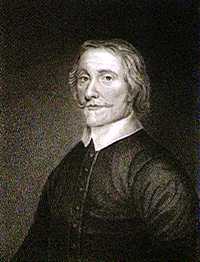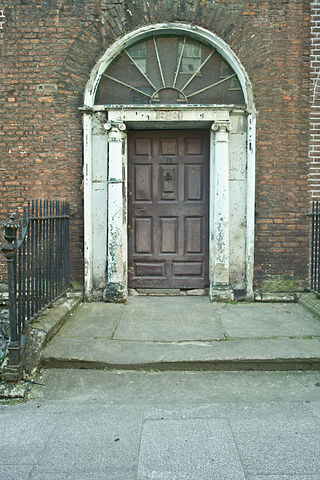
Earl of Stair is a title in the Peerage of Scotland. It was created in 1703 for the lawyer and statesman John Dalrymple, 2nd Viscount of Stair.
The title of Viscount Mountjoy has been created three times, twice in the Peerage of Ireland and once in the Peerage of Great Britain. The creations in the Peerage of Ireland were made in 1683 and 1795, and became extinct in 1769 and 1829, respectively. The creation in the Peerage of Great Britain occurred in 1796, as a subsidiary title for the Marquess of Bute, to which title it is still attached.

Earl of Roden is a title in the Peerage of Ireland. It was created in 1771 for Robert Jocelyn, 2nd Viscount Jocelyn. This branch of the Jocelyn family descends from the 1st Viscount, prominent Irish lawyer and politician Robert Jocelyn, the son of Thomas Jocelyn, third son of Sir Robert Jocelyn, 1st Baronet, of Hyde Hall. He notably served as the Lord Chancellor of Ireland from 1739 to 1756. In 1743, he was raised to the Peerage of Ireland as Baron Newport, of Newport, and in 1755 he was further honoured, when he was made Viscount Jocelyn, also in the Peerage of Ireland. He was succeeded by his son, the second Viscount. He represented Old Leighlin in the Irish House of Commons and served as Auditor-General of Ireland. In 1770 he also succeeded his first cousin once removed as fifth Baronet of Hyde Hall. In 1771 he was created Earl of Roden, of High Roding in the County of Tipperary, in the Peerage of Ireland. Lord Roden married Lady Anne Hamilton, daughter of James Hamilton, 1st Earl of Clanbrassil and sister of James Hamilton, 2nd Earl of Clanbrassil, a title which became extinct in 1798.

Viscount Valentia is a title in the Peerage of Ireland. It has been created twice. The first creation came in 1621 for Henry Power. A year later, his kinsman Sir Francis Annesley, 1st Baronet, was given a "reversionary grant" of the viscountcy, which stated that on Power's death Annesley would be created Viscount Valentia. Annesley, a member of an influential Anglo-Irish family which descended from Newport Pagnell in the County of Buckinghamshire, was a favourite of James I, who granted him land in Ireland, notably the fort of Mountnorris in County Armagh. He was knighted in 1616, created a baronet, of Newport Pagnell in the County of Buckingham, in the Baronetage of Ireland in 1620 and Baron Mountnorris, of Mountnorris in the County of Armagh, in 1628.

Baron Monson, of Burton in the County of Lincoln, is a title in the Peerage of Great Britain. It was created in 18th century for Sir John Monson, 5th Baronet. The Monson family descends from Thomas Monson, of Carleton, Lincolnshire. He sat as Member of Parliament for Lincolnshire, Castle Rising and Cricklade. On 29 June 1611 he was created a Baronet, of Carleton in the County of Lincoln, in the Baronetage of England. His eldest son, the second Baronet, fought as a Royalist during the Civil War and also represented Lincoln in the House of Commons.
The title of Earl of Blessington was created twice in the Peerage of Ireland, in 1745 and 1816. Both creations became extinct, in 1769 and 1829 respectively. The earldom was also spelt as Blesington.
The titles of Baron Mountjoy and Viscount Mountjoy have been created several times for members of various families, including the Blounts and their descendants and the Stewarts of Ramelton and their descendants.
There have been three baronetcies created for members of the Gore family, all in the Baronetage of Ireland. All three titles are extant. The family also holds two earldoms and a barony.
There have been four baronetcies created for persons with the surname Temple, two in the Baronetage of England, one in the Baronetage of Nova Scotia and one in the Baronetage of the United Kingdom.
Events from the year 1683 in Ireland.
There have been two baronetcies created for members of the Wolseley family, one in the Baronetage of England and one in the Baronetage of Ireland. As of 2018, the Wolseley Baronetcy of Mount Wolseley is dormant.
Charles Gardiner was an Irish landowner and politician.
Sir Arthur Gore, 2nd Baronet was an Irish politician and baronet.

William Stewart, 1st Earl of Blessington was an Anglo-Irish peer and member of the House of Lords, styled The Honourable William Stewart until 1728 and known as The Viscount Mountjoy from 1728 to 1745.

William Stewart, 1st Viscount Mountjoy (1653–1692), was an Anglo-Irish soldier.
Sir Richard Levinge, 1st Baronet was an Irish politician and judge, who played a leading part in Irish public life for more than 30 years.
Events from the year 1623 in Ireland.
Sir James Stewart, 7th Baronet was an Irish politician.
Mary Stewart, Viscountess Mountjoy (1654–1720), formerly the Honourable Mary Coote, was the wife of William Stewart, 1st Viscount Mountjoy. She was the daughter of Richard Coote, 1st Baron Coote (1620-1683), and his wife, the former Mary St George. Her brother was Richard Coote, 1st Earl of Bellomont.

Earl of Arran is a title in the Peerage of Ireland. It is not to be confused with the title Earl of Arran in the Peerage of Scotland. The two titles refer to different places: the Aran Islands in Ireland, and the Isle of Arran in Scotland. The Irish earldom is held by the Gore family. The Scottish earldom is a separate title, held as a subsidiary title of the Duke of Hamilton.





